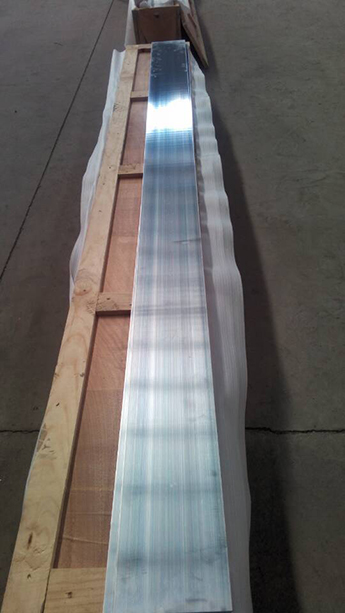Aluminum Bus Conductor
Author:Frank Time:2023-05-05
Bending and FormingAluminum bus conductors can be formed by the same procedures and practices that are used for other metals. The most important factors governing the bending of bus conductors are: (I) the ductility of the conductor, (2) the size and shape of the conductor, (3) the method of bending, and (4) the bending equipment used.

|

|
|---|
A metal must be ductile enough to permit both stretching and compression to take place. However, elongation alone is not a complete criterion for ductility. The ratio of yield strength to tensile strength must also be taken into account. A combination of a high elongation value and a low ratio of yield strength to tensile strength provides the most satisfactory ductility.
Another factor that governs bending is the size and shape of the bus conductor. For example, in the case of a tube, the sharpness of a bend depeods not only on the diameter of the tube, but also on the ratio of wall thickness to diameter. In the case of edgewise bends of rectangular angle of 90 degrees to minimum inside radli.
Properties
Aluminium and Copper Specifications
| Parameters | Aluminium | Copper |
|---|---|---|
| Relevant Standards |
IEC 60105 ISO 209-1,2 |
IEC 60028 |
|
Physical Properties Chemical Composition Specific Heat gm.cal/℃ Density gm/cm2 Melting Point ℃ |
0.092 2.91 660 |
99% pure 0.220 8.89 1083 |
|
Mechanical Properties Ultimate Tensile Strength kgf/mm2 Ultimate Shearing Strength kgf/mm2 Elastic Modulus kgf/mm2 0.2% Tensile-proof Strength kgf/mm2 |
20.5/25 15 6,700 16.5/22 |
22-26 16-19 12000 60-80% of tensile strength |
|
Electrical Properties Specific Resistance ʋʊcm Volume Conductivity ʋʊmm2 Conductivity % IACS Co-efficient of expansion mm/m/℃ |
3.133 31.9 57 2.3*10-5 |
1.7241 58 100 1.73*10-5 |
Mechanical Properties of Aluminum Bus Conductor and Related Alloys
(The Aluminum Association ; ASTM B 236, B 241, and B 429; and Manufacturer’s Listings)
| Product | Alloy and Temper |
Thickness in Ultimates |
Tensile Strength (ksi) At 20 (68。F) |
Typical Ultimate |
Typical Yield |
Typical(a) Elongation (Percent - in 2 in. Or 4 Dia) |
|
|
Minimum Ultimate |
Minimum Yield |
||||||
|
Extruded rod, bar tube, pipe and shapes |
1350-H111 | All | 8.5 | 3.5 | 35.0 | ||
| 6101-T6 | 0.125-0.500 | 29.0 | 25.0 | 32.0 | 28.0 | 15.0 | |
| 6101-T61 |
0.125-0.749 0.750-1.499 1.500-2.000 |
20.0 18.0 15.0 |
15.0 11.0 8.0 |
||||
|
6101-T63 6101-H111 6101-T64 6101-T65 |
0.125-0.500 0.250-2.000 0.125-1.000 0.125-0.749 |
27.0 12.0 15.0 25.0 |
22.0 8.0 8.0 20.0 |
14.0 | 11.0 | ||
| Extruded pipe(c) |
6061-T6 6063-T6 |
Pipe size 1.0 & over Pipe sizes,all |
38.0 30.0 |
35.0 25.0 |
45.0 35.0 |
40.0 31.0 |
10.0 min 8.0 min |
| Rolled bar | 1350-H12 | 0.125-1.000 | 12.0 | 8.0 | 14.0 | 12.0 | |
| Sawed-plate bar or sheet | 1350-H112 |
0.125-0.499 0.500-1.000 1.001-3.000 |
11.0 10.0 9.0 |
6.0 4.0 3.5 |
10.0min 16.0min 22.0min |
||
|
Rolled sheet (for shearing or forming) |
1350 1350-H12 1350-H14 |
0.020-0.249 |
8.0 12.0 14.0 |
12.0 14.0 16.0 |
4.0 12.0 14.0 |
20-30 min 4-9 min 3-6 min |
|
|
1350-H16 1350-H18 |
0.020-0.125 |
16.0 18.0 |
18.0 | 16.0 |
2-4 min 2-4 min |
||
| Cast Alloy for Bus |
1350-F 1050 |
1 in. And up | 8.5 | 3.5 | 35.0 | ||
| Cast Alloy for Fittings | A356.0-T61 | 37.0 | 5.0 | ||||










